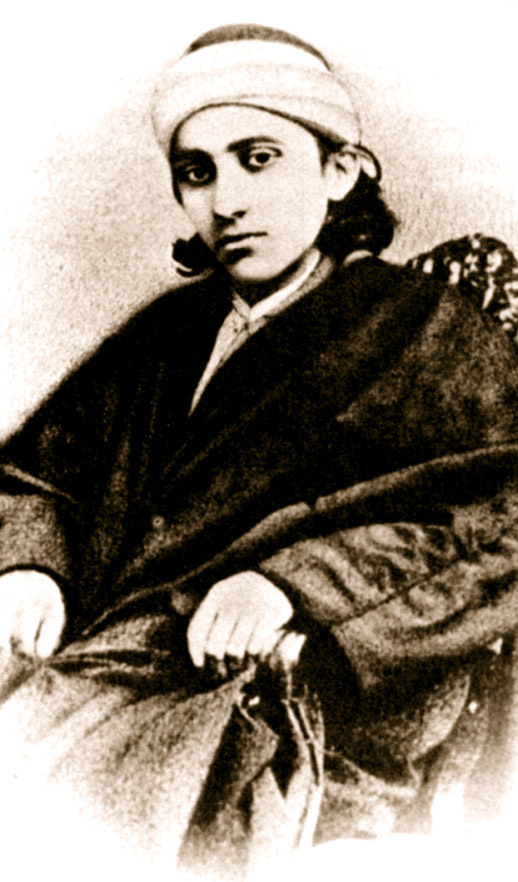The views expressed in our content reflect individual perspectives and do not represent the authoritative views of the Baha'i Faith.
In the coming centuries, several of Abraham’s descendants would step forward to teach the lesson of self-sacrifice by becoming the ram, becoming the lamb, becoming a voluntary substitute for Ishmael and demonstrating the redeeming power of self-sacrifice.
In Christianity, Jesus sacrificed himself. Soon after John the Baptist met Jesus, he showed that he understood the relationship between Jesus and the ram/lamb by proclaiming “Behold the lamb of god, which taketh away the sin of the world.” After Jesus had been crucified, the Apostle Peter reinforced the symbolic connection between Jesus and the sacrificed ram by saying that Jesus had redeemed mankind:
…with the precious blood of Christ, as of a lamb without blemish and without spot. – John 1:29.
Many of Jesus’ early followers absorbed his lesson about the power of self-sacrifice so completely that they continued to tell others about the new religion even when threatened with torture or death. Martyrs like St. Stephen, who was stoned to death, and St. Peter, who was crucified by Nero, come immediately to mind. But, powerful as these examples were, not everyone managed to learn the lesson. Ritual animal sacrifice continued to be the norm in dozens of cultures, while the example of spiritual self-sacrifice and restraint embedded in Jesus’ teaching of “turn the other cheek” was often ignored.
In Islam, the lesson about self-sacrifice was taught by the Imam Husayn, a grandson of Muhammad. Husayn was the third Imam (spiritual leader) of Shia Islam, and his greatest desire was to turn the young religion of Islam away from the wayward path it had begun to follow under the direction of the Umayyad clan that had seized power after the death of Muhammad’s son-in-law, Ali.
When Husayn refused to acknowledge the supremacy of the new Umayyad ruler, Caliph Yazidi—an alcoholic who openly flouted many of the laws given by Muhammad—he knew that the act would result in his own death. In AD 680, while returning from Mecca to his home in Kufa, Husayn and a group of about seventy friends and family members were confronted by an army of four thousand men who demanded he sign a pledge of allegiance to Yazidi. When Husayn refused, his group was slaughtered, except for the women and most of the children. The dead men were decapitated and their heads raised on spears by the triumphant troops.
The horror of these brutal acts and the unwarranted death of Muhammad’s beloved grandson created an upwelling of protest that ultimately led to a revolt against the Umayyad dynasty. In AD 750, the dynasty—and its interpretation of Islam—was overthrown. Some historians have concluded that because of Husayn’s sacrifice, Islam became a more thoughtful and morally conscious religion than it might otherwise have been. Shia Muslims continue to commemorate the death of the Imam Husayn each year with a ten-day period of mourning.
The sacrificial lamb of the Babi Faith was the Bab himself. Like Jesus, the Bab’s period of ministry was very short—just six years. He was only thirty when, in 1850, he was put to death by a firing squad of seven hundred and fifty men in Tabriz, Iran. In the wake of his death, hundreds of recent converts followed his example by being tortured or killed rather than renounce their new faith.

Mirza Mihdi at age 20
In the Baha’i Faith, one could cite any number of people who have been martyred in the years since Baha’u’llah died, sacrificing their lives like the ram/lamb. One of the most poignant examples, however, lies in the way that Mirza Mihdi, the youngest son of Baha’u’llah, offered his own life as a ransom with a specific purpose.
Mirza Mihdi was, with other members of Baha’u’llah’s family, imprisoned in the fetid prison of Acre after having been exiled from Turkey in 1868. Like many other buildings of that period, the roof of the prison was flat and dotted with unguarded holes serving as skylights for the floor below. Mirza Mihdi, who liked to climb up to the flat roof in the evening so that he could pace back and forth while saying prayers, lost his footing and fell through one of the holes. He landed on a wooden crate, and one of its boards pierced his chest. Baha’u’llah heard the crash and rushed to the scene. Because Baha’u’llah was a messenger of God, it is assumed that he could have chosen to save the life of his son, but when he asked Mirza Mihdi if he wished to live, the answer was extraordinary. Mirza Mihdi explained that he wanted his life to be accepted as a ransom for all of the pilgrims who had traveled great distances to visit Baha’u’llah but were denied the privilege of seeing Him. “God will grant your wish,” Baha’u’llah replied.
Mirza Mihdi died the next day, on June 23, 1870, at the age of twenty-two. Three months later, the government abruptly decided to use the prison as barracks for troops. To make this possible, it opened the doors of the prison and provided much more pleasant housing for the inmates elsewhere. With this change, the government inadvertently began allowing Baha’u’llah to receive visitors, thus fulfilling Mirza Mihdi’s wish that pilgrims be given access to his father. Through the ever-enlarging procession of visitors, information about the Baha’i Faith began to spread out into the world in a way that would have been impossible had Baha’u’llah remained in the prison building.
In one of Baha’u’llah’s prayers, He speaks of Mirza Mihdi with great tenderness and promises that his dying wish will be granted, saying,
Thou art the Trust of God and His Treasure in this land. Erelong will God reveal through thee that which He hath desired. – quoted by Shoghi Effendi in God Passes By, p. 188.
The prayer also contains a sentence sharp enough to wound the heart of every bereaved parent, a sentence that could just as easily have been said by Abraham, by Joseph, father of Jesus; by Muhammad, the grandfather of Husayn; or by the Bab:
I have, O my Lord, offered up that which Thou hast given Me, that Thy servants may be quickened, and all that dwell on earth be united. – Ibid.
















Comments
Sign in or create an account
Continue with Googleor